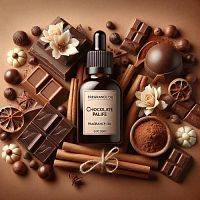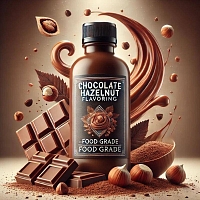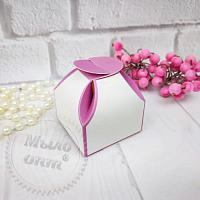-
 Absolutes
Absolutes
-
 Active Complexes
Active Complexes
-
 Actives and Peptides for Cosmetics
Actives and Peptides for Cosmetics
-
 Amino Acids
Amino Acids
-
 Food Flavorings
Food Flavorings
-
 Ayurveda
Ayurveda
-
 Vitamins
Vitamins
-
 Gelling Agents and Thickeners
Gelling Agents and Thickeners
-
 Hydrosols and Floral Waters
Hydrosols and Floral Waters
-
 Hydrolyzed Proteins
Hydrolyzed Proteins
-
 Fragrant and aromatic substances
Fragrant and aromatic substances
-
 Acids, Salts, Alcohols, and Alkalis
Acids, Salts, Alcohols, and Alkalis
-
 Preservatives and Antioxidants
Preservatives and Antioxidants
-
 Cosmetic Raw Materials
Cosmetic Raw Materials
-
 Dyes, Pearlescents, and Glitters
Dyes, Pearlescents, and Glitters
-
 Face Masks, Scrubs, and Dried Flowers
Face Masks, Scrubs, and Dried Flowers
-
 Oils, batters, macerates, oil mixtures
Oils, batters, macerates, oil mixtures
-
 Candle Supplies
Candle Supplies
-
 Melt and Pour Soap Bases
Melt and Pour Soap Bases
-
 Base for cosmetics, cream, serum, shampoo
Base for cosmetics, cream, serum, shampoo
-
 Fragrance Oils
Fragrance Oils
-
 Surfactants
Surfactants
-
 Peelings for Skin
Peelings for Skin
-
 Herbal Powders and Plant
Herbal Powders and Plant
-
 Silicones and Conditioning Surfactants for Hair
Silicones and Conditioning Surfactants for Hair
-
 Raw materials for dietary supplements
Raw materials for dietary supplements
-
 Packaging for Cosmetics and Perfumes
Packaging for Cosmetics and Perfumes
-
 Molds, Packaging, Tools
Molds, Packaging, Tools
-
 Organic Extracts
Organic Extracts
-
 Emollients for Cosmetics
Emollients for Cosmetics
-
 Emulsifiers
Emulsifiers
-
 Essential Oils
Essential Oils
Silicone Loaf Mold: Your Versatile Tool for Creative Crafts & Culinary Delights
Unlock endless creative possibilities with our Silicone Loaf Mold, a high-quality, food-grade silicone form meticulously crafted in China. Available in a variety of vibrant colors, this versatile mold is an indispensable tool for both culinary enthusiasts and crafting connoisseurs. With external dimensions of 12 x 26 cm and an internal cavity of 23.5 x 10 cm with a height of 5 cm, it's perfectly sized for a wide range of projects, from delicious baked goods to intricate handmade soaps.
Description and Key Features
The Silicone Loaf Mold is designed for superior performance and ease of use. Made from durable food-grade silicone, it's incredibly flexible, ensuring easy release of your creations without sticking or breaking. This material is also highly resistant to extreme temperatures, making it safe for use in ovens, freezers, and microwaves. The mold's non-stick surface simplifies both the pouring and demolding processes, while its flexible nature allows for effortless cleaning. The assorted colors add a touch of fun to your crafting or baking experience, making it a joy to use time and again.
Versatile Applications and Usage Areas
The adaptability of the Silicone Loaf Mold makes it an essential item for various creative pursuits, offering precise and consistent results every time:
- Baking:
- Loaf Breads and Quick Breads: Ideal for baking classic loaf breads, banana bread, zucchini bread, or savory meatloaves. The non-stick surface ensures even baking and easy removal.
- Cakes and Brownies: Perfect for creating rectangular cakes, fudgy brownies, or even layered dessert bars. The consistent heat distribution of silicone helps achieve a perfectly baked product.
- Homemade Granola Bars: Mold your own healthy and delicious granola bars with ease, creating uniform portions.
- Confectionery (Marmalade & Chocolate):
- Marmalade and Jellies: Excellent for setting homemade marmalades, fruit jellies, or agar-based desserts into neat, sliceable blocks.
- Chocolate Bars: Craft custom-sized chocolate bars with inclusions like nuts, dried fruit, or caramel. The flexible silicone allows for intricate designs and easy demolding of delicate chocolate.
- Handmade Soap Crafting:
- Cold Process & Melt and Pour Soaps: This mold is incredibly popular for cold process and melt and pour soap making. Its loaf shape is perfect for creating large soap blocks that can then be easily cut into individual bars, ideal for professional soap makers or hobbyists.
- Layered Soaps: The consistent dimensions allow for precise layering of different colored and scented soap bases, creating stunning visual effects.
- Embeds: It's also suitable for making smaller embeds or soap chunks that can be later incorporated into larger soap designs.
- General Handcrafts (Handmade & DIY Projects):
- Candle Making: Create unique rectangular candles using various waxes. The silicone's heat resistance makes it safe for pouring hot wax.
- Bath Bombs and Melts: While traditionally spherical, this mold can be used to create large, unique bath bomb or bath melt "loafs" that can then be cut into smaller portions for multiple uses.
- Plaster or Resin Crafts: Experiment with plaster of Paris, resin, or concrete to create decorative blocks, paperweights, or unique artistic pieces.
- Ice Molds: Create large ice blocks for beverages, ensuring your drinks stay cold without diluting quickly.
- Frozen Treats: Make large frozen yogurt or ice cream bars, or even homemade dog treats.
The Silicone Loaf Mold is designed for easy cleanup, being dishwasher safe, or simply requiring a quick wash with soap and water. Its durability ensures it will be a staple in your creative arsenal for years to come.
Cosmetic Recipe: "Oatmeal & Honey" Nourishing Soap Loaf
Create a wonderfully soothing and nourishing handmade soap using the Silicone Loaf Mold, perfect for sensitive skin.
| Ingredient | Percentage (%) | Function |
|---|---|---|
| Phase A (Oils) | ||
| Coconut Oil | 30% | Hardness, cleansing lather |
| Palm Oil (sustainable) | 25% | Hardness, stable lather |
| Olive Oil | 25% | Conditioning, mildness |
| Sweet Almond Oil | 10% | Emollient, nourishing |
| Castor Oil | 5% | Bubbly lather, humectant |
| Shea Butter | 5% | Conditioning, moisturizing |
| Phase B (Lye Solution) | ||
| Distilled Water | 33% (of total oils weight) | Solvent for lye |
| Sodium Hydroxide (NaOH) | Calculated for 5-7% superfat | Saponifies oils into soap |
| Phase C (Additives - At Trace) | ||
| Colloidal Oatmeal | 1-2% (of total batch weight) | Soothing, gentle exfoliant |
| Raw Honey | 1-2% (of total batch weight) | Humectant, adds moisturizing properties |
| Essential Oil Blend (e.g., Lavender & Litsea Cubeba) | 1-2% (of total batch weight) | Natural fragrance |
Instructions for Preparation (Cold Process Soap Making):
- Safety First: Wear long sleeves, gloves, and eye protection. Work in a well-ventilated area. Keep vinegar nearby for neutralizing any lye spills.
- Prepare Lye Solution (Phase B): Carefully weigh out your distilled water in a heat-resistant container. In a separate container, weigh your sodium hydroxide. Slowly add the sodium hydroxide to the water (NEVER water to lye) while stirring gently. The solution will heat up rapidly. Stir until dissolved and set aside in a safe place to cool to 40-50°C (105-120°F).
- Prepare Oils (Phase A): In a large, heat-resistant bowl, weigh and combine all your solid and liquid oils. Gently heat them until all solid oils are melted and the mixture is clear. Allow the oil mixture to cool to 40-50°C (105-120°F), similar to your lye solution temperature.
- Combine & Trace: When both the lye solution and oil mixture are within the target temperature range, slowly pour the lye solution into the oils, stirring continuously with a stick blender. Blend in short bursts, stirring manually in between, until the mixture reaches "trace" (when the mixture thickens to the consistency of thin pudding and leaves a visible trail on the surface when drizzled).
- Add Actives (Phase C): At light trace, add the colloidal oatmeal, raw honey, and essential oil blend. Use the stick blender briefly to fully incorporate them.
- Pour into Mold: Immediately pour the soap batter into the Silicone Loaf Mold. Tap the mold gently on your work surface a few times to release any air bubbles.
- Insulate & Cure: Cover the mold loosely with parchment paper and then insulate it with a towel or blanket for 24-48 hours. This helps the soap go through gel phase.
- Unmold & Cut: After 24-48 hours, carefully unmold the soap loaf from the flexible Silicone Loaf Mold. It should be firm enough to handle. Use a sharp, straight knife or a soap cutter to slice the loaf into individual bars of your desired thickness.
- Cure: Place the cut soap bars on a drying rack in a well-ventilated area for a minimum of 4-6 weeks (cold process soap requires a curing period to harden, allow water to evaporate, and become milder). Flip them periodically.
Recommendations for Use & Care of the Silicone Loaf Mold:
- Temperature Range: The Silicone Loaf Mold is safe for temperatures typically ranging from -40°C to 230°C (-40°F to 446°F), making it suitable for freezing, baking, and hot pouring.
- Cleaning: After use, wash the mold with warm soapy water or place it in the dishwasher. Its non-stick properties make cleanup very easy.
- Storage: Store the mold flat or rolled to maintain its shape and prevent creasing. Keep it away from sharp objects to prevent damage.
- No Greasing Needed: Due to the non-stick nature of silicone, greasing or lining the mold is generally not necessary for most applications.
- Support for Liquid Batters: When working with very liquid batters (e.g., thin soap batter or some baking recipes), it's advisable to place the Silicone Loaf Mold on a baking sheet or a sturdy tray before filling and transferring to the oven or curing area to prevent spills and provide stability.
- Versatility in Colors: While the specific color of your mold may vary, its performance remains consistent. Enjoy the assortment!
And also go to the Blog from Мыло Опт, where we share useful information about creating the right natural cosmetics
| Other | ||
| Application | pastries, marmalade, chocolate hobby, handmade soap, hand made | |
| Color product | in assortment | |
| Features | All information presented on the site is for reference only | |
| Material | food grade silicone | |
| Minimum count | 1 | |
| Name | Silicone form Baton | |
| Packing | 1 m | |
| Valid until | не ограничен | |
-
Date:todayAuthor:Анна, ТернопільReviews
Завжди отримую від магазину приємні знижки на наступні покупки. Дякую за вашу турботу!









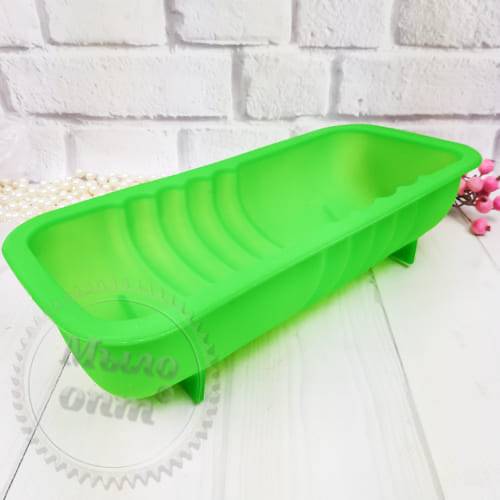
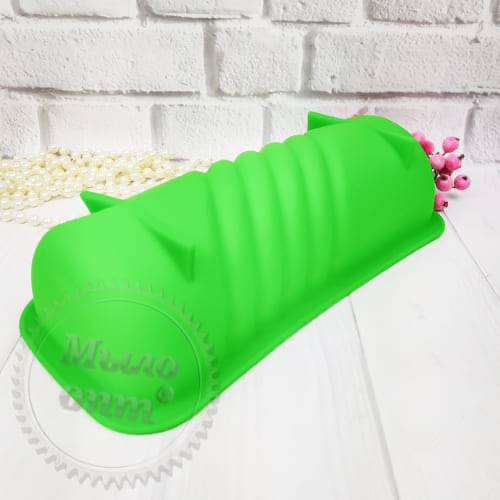
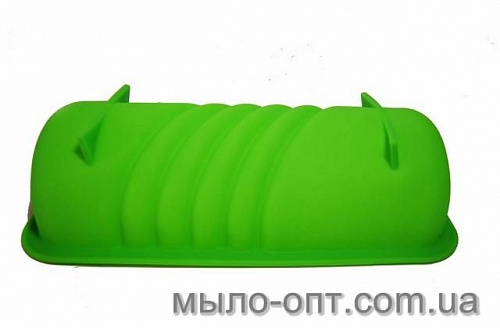
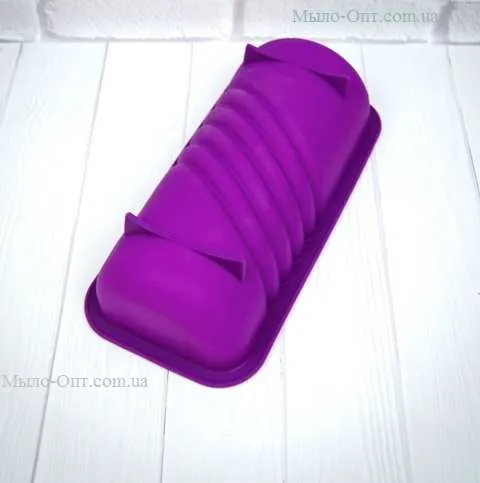










 Add to cart
Add to cart Buy in 1 click
Buy in 1 click

 Add a review
Add a review To favorites
To favorites To compare
To compare






